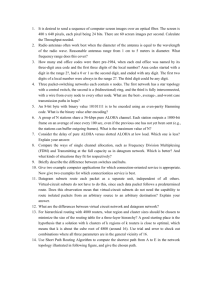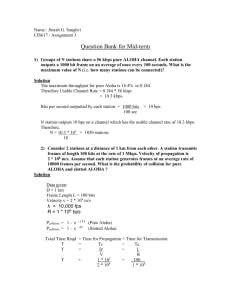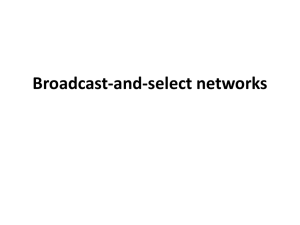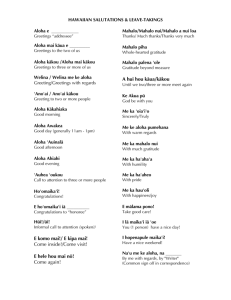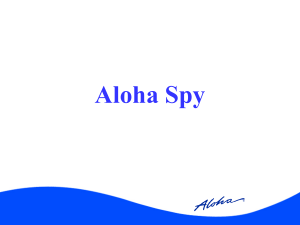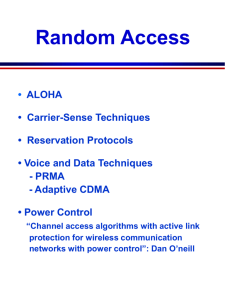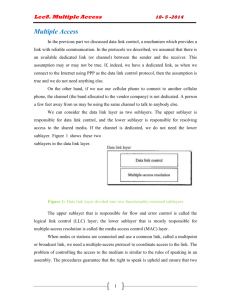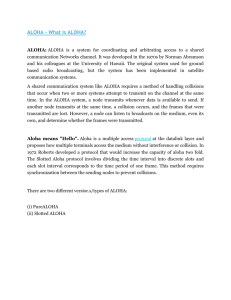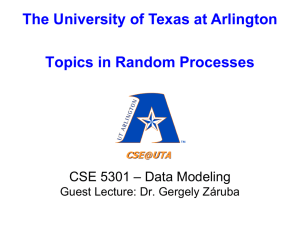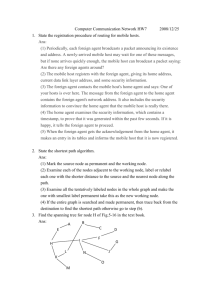CIS 617 - NETWORKS & COMMUNICATION
advertisement
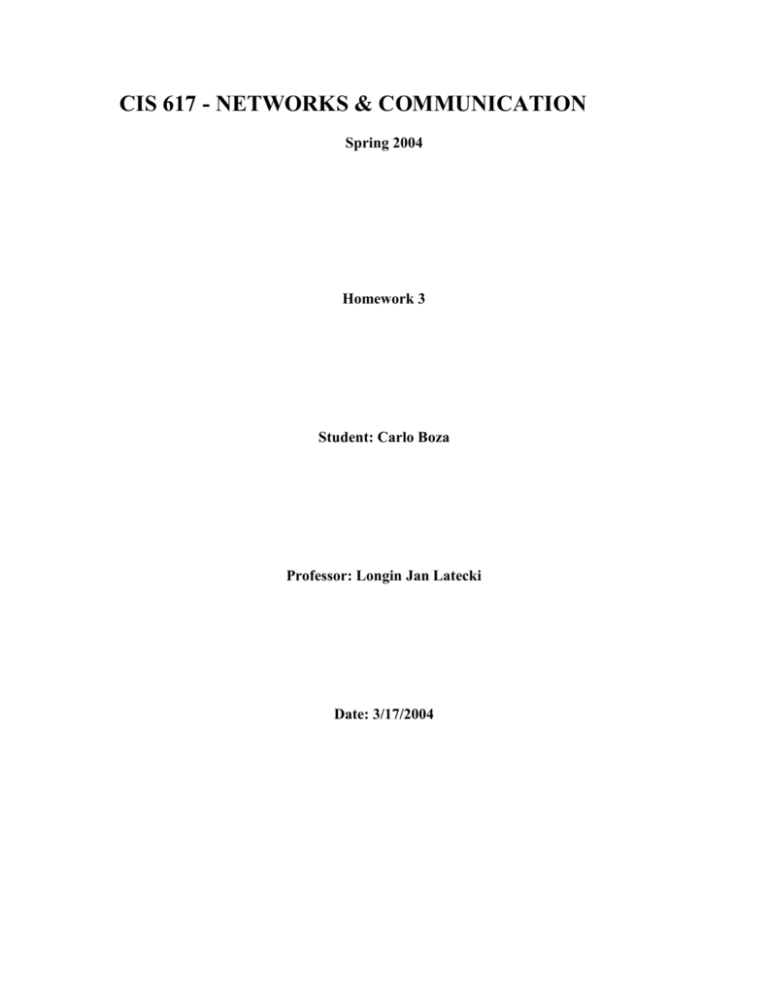
CIS 617 - NETWORKS & COMMUNICATION Spring 2004 Homework 3 Student: Carlo Boza Professor: Longin Jan Latecki Date: 3/17/2004 1. Question 5.15: Consider the network in Fig 5.16a. Image that one of new line is added, between F and G, but the sink tree of Fig 5.16b remains unchanged. What changes occur to Fig 5.16c? Answer: The tree built by reverse path forwarding is as follows I F A H D G E J K O N E H C B L G N G F M D O K L H B There are no relevant changes in regards to the path that packets follow when broadcast from I. That is because F-G line is not part of the sink tree, or the possible route from F to G is not preferred (see sink tree). 2. Question 5.3: Datagram subnets route each packet as a separate unit, independent of all others. Virtual-circuit subnets do not have to do this, since each data packet follows a predetermined route. Does this observation mean that virtual-circuit subnets do not need the capability to route isolated packets from an arbitrary source to an arbitrary destination? Explain your answer Answer: No, it does not. In virtual-circuit subnets, routers have to route packets based on the following pieces of information: - Virtual-Circuit number - Incoming line Each packet contains a Virtual-Circuit number and the incoming line identification is, of course, known by the router. Finally, to re-estate the observation, virtual-circuit subnets do need the capability to route isolated packets from an arbitrary incoming line (which is well know by the router) and with an arbitrary circuit number (information carried in the packet). That means, knowing the original source and the final destination is not required. 3. Question 4.2: A group of N stations share a 56-kbps pure ALOHA channel. Each station outputs a 1000-bit frame on an average of once every 100 sec, even if the previous one has not yet been sent (eg. The stations can buffer outgoing frames). What is maximum value of N? Answer Since each station buffers the packet when the channel is busy, then we can assume that there is no contention for the use of the channel; that means, there are no retransmissions due to collisions and then no queuing delay. Consequently, for a capacity of 56-kbps, each station uses 1000b/100s=10bps (1000-bit frame on an average of once every 100 sec). Then the channel can be used by 56kbps/10bps=5,600 stations. 4. Question 4.3: Consider the delay of pure ALOHA versus slotted ALOHA at low load. Which one is less? Explain your answer. Answer Statistically pure ALOHA is supposed to be less efficient than slotted ALOHA, that means, at normal load or when collisions occur in a contention channel. However, if the load is low, then pure ALOHA is supposed to be as efficient as slotted ALOHA (statistically) (See Figure 4.3 page 254). But if we consider the delay of sending the packet in a slotted time as in the slotted ALOHA protocol, then we can say that slotted ALOHA’s delay is more than the one in pure ALOHA protocol, which send the packet immediately. 5. Question 3.6: When a bit stuffing is used, is it possible for the loss, insertion, or modification of a single bit to cause an error not detected by the checksum?. If not, why not? If so, how? Does the checksum length play a role here? Answer Yes, it is. For a given frame length of K, there are 2K possible combinations of frames, then the each possible value of the checksum should map each possible combination of frames in a 1-to-1 relationship in the worst case. Consequently, the length of the checksum does play a role in the reliability of error detection, that means, there is a minimum checksum length for a given frame length. If the previous issue were not a problem, then no matter where the loss, insertion or modification of the bit is (in the checksum, the data itself, or even the flag “pattern”), the frame error will be detected when checksum does not match a modified frame, or the modified checksum does not match the data, or the checksum does not match a frame that accidentally contains more than one frame (this case occurs if the flag ‘pattern’ was modified in the physical layer).
